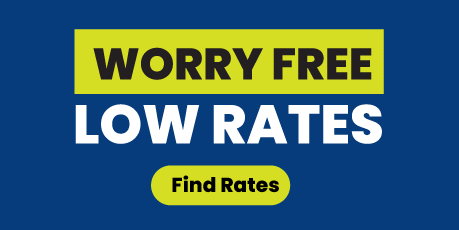What is Debt-To-Income Ratio (DTI) and how to calculate it?


Commentary: In this article we will answer the question many home buyers often ask, "How much money do I need to make to buy a home?" The benefits of homeownership are long lasting for both quality of life but also acquiring wealth.
Debt-to-Income Guidelines To Buy A Home
First, we want to give you a fast overview of the tools we use to qualify income and debts together. Second, we will explain how they work and in closing we will provide you with a no credit pull income qualifying tool you can use to verify how much home you can afford.
If you want a short cut you are welcome to use our online mortgage pre-approval calculator to skip to the finsih line. This home affordability calculator will tell you how much home you can afford, and what your monthly payment will be. This helps for shopping for homes because real estate agents require pre-approvals to begin the home search with you.
Income Qualifying Tools
Front Debt To Income Ratio
Front DTI= Primary Housing Expense divided by your Gross Monthly Income. This means if your monthly payment including insurance and property taxes is $ 1,000.00 and you make $4,000.00 then your front debt to income ratio would be $1,000.00 divided by $4,000.00 which = 25%
Qualifying Rule (F.DTI): A good general rule is to try to keep this ratio under 42%; however, there are mitigating factors that allow us to use higher ratios. for example, maybe you are putting a very large down payment down, or maybe you have a lot of financial assets that you can show.
Back Debt To Income Ratio
Back DTI= Primary Housing Expense + all other credit based bills divided by your Gross Monthly Income. For an Example lets use the above and just throw in a car payment of $ 300.00 and a credit card bill of $100.00 a month.
Therefore, your Back Debt To Income Ratio= $1,000.00 + $300.00 + $100.00 divided by $4,000.00 a month gross income. Therefore, a total of $1,400.00 divided by $4,000.00 = 35%
Qualifying Rule (B.DTI): A good general rule is to try to keep this ratio under 50%; however, there are mitigating factors that allow us to use higher ratios. for example, maybe you are putting a very large down payment down, or maybe you have a lot of financial assets that you can show.
Debts Included In DTI Ratios
- Auto Loans
- Student Loans
- Other Real Estate Loans
- Personal Loans
- Credit Cards
- Property Taxes
- Homeowners Insurance
Excluded Debts NOT counted in DTI
- Cosigned Loans that you have proof you do not pay
- Any debts still in your name that a divorce decree shows you do not owe
- Any installment loan that has 10 or less monthly payments
Monthly Income Qualifying
To determine how much home you can afford, we need to look at all your sources of income that your receive that can be verified and is declared on your taxes.
In general, income that can be included must show a two year prior history, and must continue for 3 years forward with exception to basic employment and self employment.
For example, if you receive social security they expect it to continue for at least 3 years. If you receive child support they will want to verify you have been receiving it and it will continue for at least 3 years.
Important any income you receive that is not taxed such as; child support, disability, social security will be increased by an additional 20% to account for the fact that it is not gross income. In other words, we will add back what would be equivalent to if it was gross income before taxes.
Self Employed borrowers are required to have 2 years of tax returns in order to qualify for traditional mortgage programs. Self Employed Income is taken by adding up the last 2 years adjusted gross income + adding back any depreciation than taking a 24 month average.
Types of Income Accepted for Mortgage Loans
- Child Support
- Part Time jobs if greater than 2 years
- Alimony
- Social Security Income
- Social Security Disability
- Retirement Income
- Investment Income
- Military Benefits
- Rental Income on other properties
Compensating Factors for Approvals
When your documents and/or debts do not support initial approvals, in many cases there can be compensating factors that hands on intervention can overcome on a case by case scenario. Below is a common list of what we call compensating factors that we can use to determine home affordability and answer how much income you can afford questions.
- Low income but very high liquid assets
- Very high credit scores and very high down payment
How can I lower my Debt-to-Income to get approved for a loan?
If you have been denied a loan request due to insufficient income to qualify and you also have monthly debts, then lowering your debt-to-income is an option that you can explore. In many cases you can pay down your month debt obligations, and restructure your debt so you will qualify for financing.
If you really want a to make sure that you qualify for homeownership, use our 3 min Pre Approval Calculator, this will quickly consider all factors and return real loan options, all with no credit pull no spam calls or emails.
i hope this article informative and armed you with the knowledge to know how much home you can afford based upon your income.







